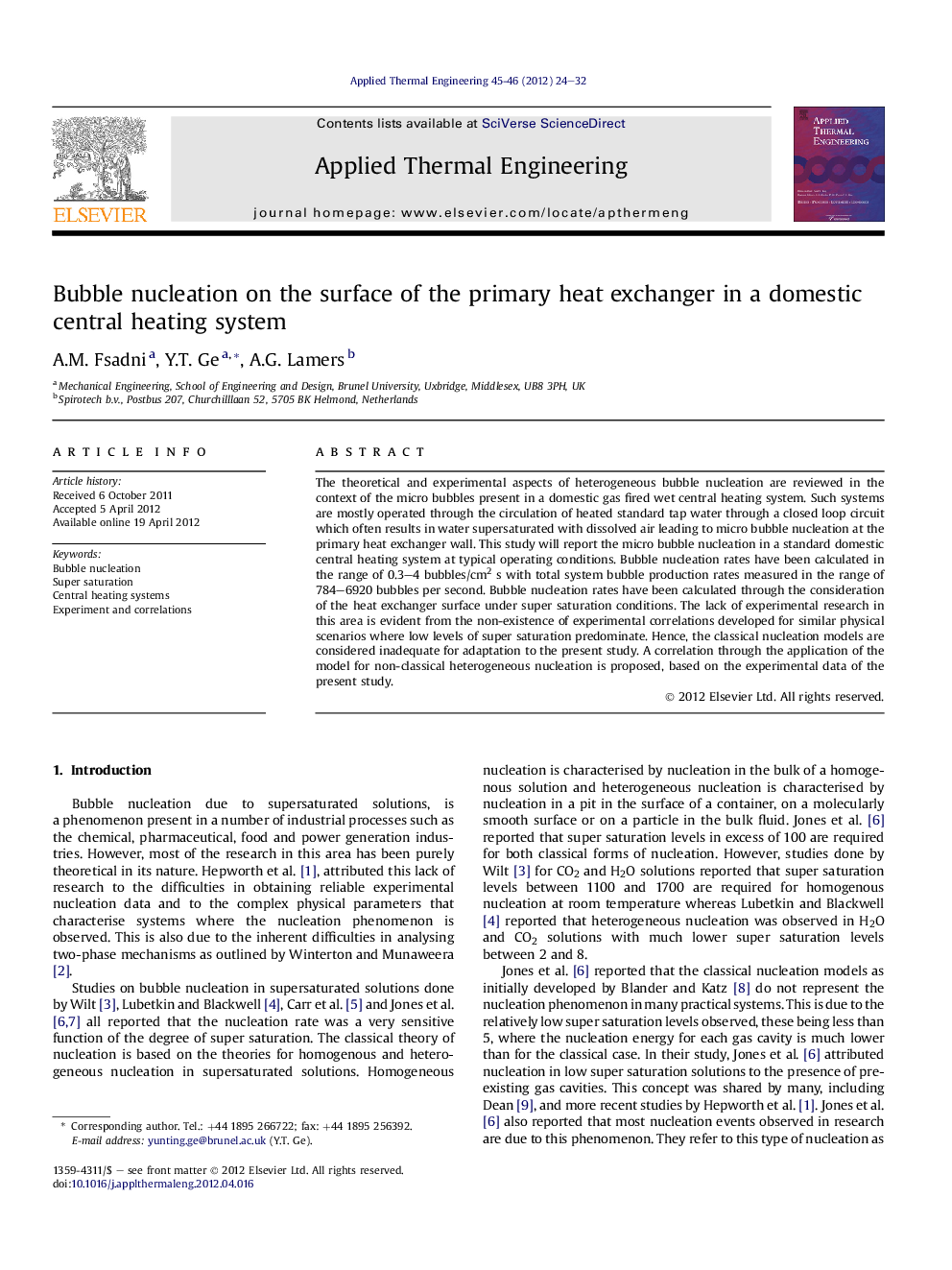| Article ID | Journal | Published Year | Pages | File Type |
|---|---|---|---|---|
| 647381 | Applied Thermal Engineering | 2012 | 9 Pages |
The theoretical and experimental aspects of heterogeneous bubble nucleation are reviewed in the context of the micro bubbles present in a domestic gas fired wet central heating system. Such systems are mostly operated through the circulation of heated standard tap water through a closed loop circuit which often results in water supersaturated with dissolved air leading to micro bubble nucleation at the primary heat exchanger wall. This study will report the micro bubble nucleation in a standard domestic central heating system at typical operating conditions. Bubble nucleation rates have been calculated in the range of 0.3–4 bubbles/cm2 s with total system bubble production rates measured in the range of 784–6920 bubbles per second. Bubble nucleation rates have been calculated through the consideration of the heat exchanger surface under super saturation conditions. The lack of experimental research in this area is evident from the non-existence of experimental correlations developed for similar physical scenarios where low levels of super saturation predominate. Hence, the classical nucleation models are considered inadequate for adaptation to the present study. A correlation through the application of the model for non-classical heterogeneous nucleation is proposed, based on the experimental data of the present study.
► Heterogeneous bubble nucleation has been reviewed. ► Micro bubble nucleation in a central heating system was reported in experiments. ► Bubble nucleation rate was calculated under super saturation conditions. ► A correlation from a non-classical heterogeneous nucleation model was revised with test results.
